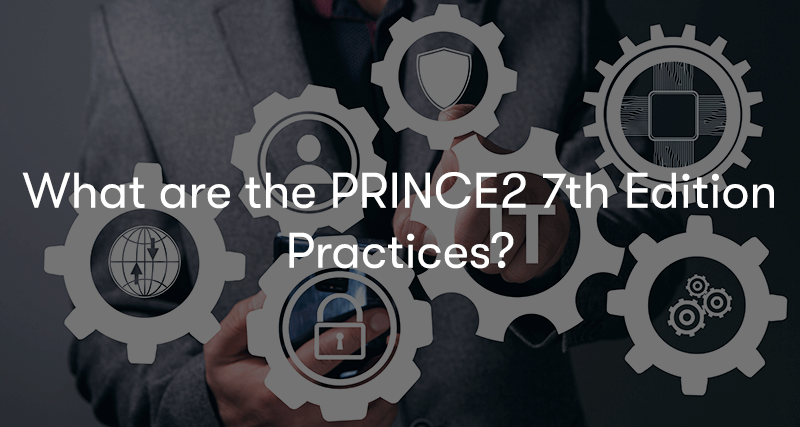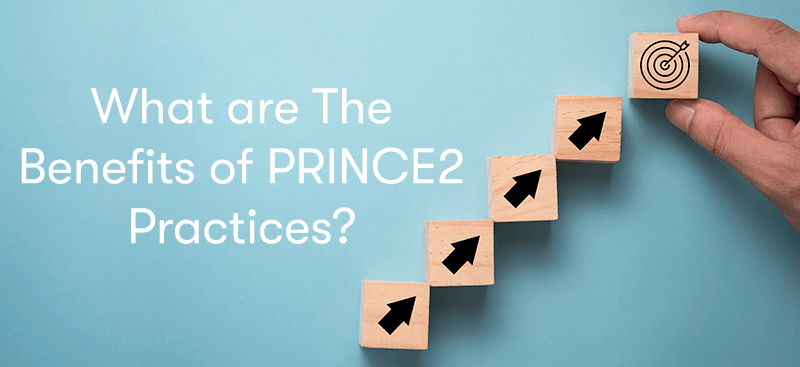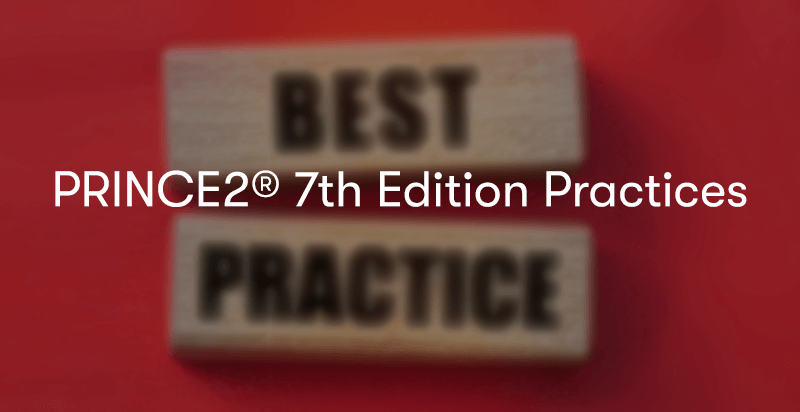PRINCE2® 7th Edition Practices
Welcome to our insightful exploration of the PRINCE2 7th edition practices, a comprehensive framework that intricately guides modern project management. In this blog, we delve into the PRINCE2 practices and aspects of project management demanding continuous focus as the project progresses. The efficacy of PRINCE2 is rooted in the harmonious amalgamation of seven practices, evident in their interconnection and widespread implementation across all PRINCE2 processes. Join us on this transformative journey, where these advantages seamlessly harmonise with the dynamic landscape of project management, optimising outcomes in an ever-evolving business panorama. If you would like more information on PRINCE2, check out our PRINCE2® Foundation (7th Edition) Training Course.
What are Practices?
PRINCE2 defines a practice as ”An aspect of project management that must be applied consistently and throughout the project lifecycle. The practices require specific treatment of that aspect of project”. For more PRINCE2 definitions please consult our PRINCE2 Glossary.
Practices were formally named themes in PRINCE2 6th Edition, but have changed with the introduction to PRINCE2 7th Edition.
The PRINCE2 practices outline facets of project management that require ongoing attention as the project advances through its stages. For instance, the project's business case necessitates consistent updates and revalidation during the project's lifecycle due to potential issues and the need for risk management. The effectiveness of PRINCE2 lies in the seamless integration of these seven practices, both in their interconnectedness and their application across all PRINCE2 processes. The 7 PRINCE2 7th Edition practices are:
- Business case
- Organising
- Plans
- Quality
- Risk
- Issues
- Progress
What are the PRINCE2 7th Edition Practices?

The 7 PRINCE2 Practices are as follows:
Business case
The inception of the project originates from a concept deemed valuable for the relevant organization. This procedure tackles the process of transforming the concept into a workable investment proposal and establishing criteria for gauging and confirming achievement. It establishes the groundwork for how project management sustains concentration on the project's advantages, intent, and harmonization with the objectives and priorities of the business and other associated entities throughout the project's course.
Organising
Guidance for project endeavours entails supervision by those answerable, assignment to individuals tasked with overseeing it, and distribution among those responsible for furnishing the necessary project deliverables. Because projects involve multiple functions, conventional hierarchical management frameworks are inadequate. This procedure delineates the positions, duties, and interactions within the transient PRINCE2 project management group, indispensable for the proficient initiation and conclusion of the project. It explicates how the project's undertakings and decision-making incorporate the interests of the business, users, and suppliers.
Plans
PRINCE2 projects progress through phases outlined by a sequence of endorsed plans. This approach enhances the quality procedure by explaining the process of formulating and creating plans. Within PRINCE2, these plans are tailored to cater to the requirements of individuals across the project management tiers; strategic direction, execution oversight, and product delivery, and they serve as the central elements for both communication and oversight from start to finish.
Quality
The initial concept of the project will initially exist as a general overview. This procedure elucidates the process of refining this outline to ensure that all involved parties comprehend the quality characteristics of the intended deliverables. Furthermore, it details how project management will subsequently guarantee the fulfilment of these stipulated requirements.
Risk
Because projects entail distinctive elements, involving novel products, suppliers, and/or procedures, a heightened level of uncertainty arises, leading to increased risk. This procedure focuses on how the project team navigates and handles this uncertainty.
Issues
This procedure outlines how project management evaluates and reacts to matters that could potentially influence any facet of the project, encompassing its objectives, plans, and deliverables. These matters might encompass unforeseen challenges, change requests, or instances where a product deviates from its specified criteria.
Progress
This procedure concerns the continuous viability of the plans. It clarifies the surveillance of performance and the procedure for escalating situations if they deviate from the intended course, utilising a combination of event-triggered and time-based measures. Ultimately, this practice decides whether and how the project should advance.
What are The Benefits of PRINCE2 Practices?

Strategic Ideation
Initiating projects from valuable ideas aligns with organisational strategies, ensuring efforts contribute meaningfully to overall goals.
Structured Development
Transforming concepts into investment propositions introduces a structured approach, enhancing feasibility assessment and project development.
Clear Success Metrics
Defining and verifying success criteria establishes a measurable framework, promoting accountability and facilitating objective project evaluation.
Focused Direction
The practice maintains unwavering focus on project benefits, intent, and alignment with business priorities, preventing scope creep and ensuring objectives are met.
Accountable Execution
Clearly defined roles and responsibilities ensure seamless direction, management, and delivery of project components, reducing ambiguity and streamlining execution.
Cross-functional Synergy
Addressing cross-functional project requirements necessitates tailored management structures, fostering cohesive collaboration and efficient resource allocation.
Inclusive Representation
Describing roles and relationships in PRINCE2 project management teams ensures diverse stakeholder interests are incorporated into project activities and decision-making.
Staged Progression
Delivering projects in stages based on approved plans enhances quality and control, allowing for iterative development and responsive adjustments.
Optimised Planning
Aligning plans with stakeholder needs across project management layers promotes effective communication, reducing risks and enhancing coordination.
Quality Assurance
Elaborating on how the initial project idea develops ensures stakeholder comprehension of deliverable attributes, enhancing product quality and satisfaction.
Risk Management
Addressing uncertainty unique to projects with new elements fosters proactive risk management, ensuring contingencies are in place for effective risk mitigation.
Issue Resolution
The practice of assessing and responding to potential issues promotes early identification and resolution, preventing disruptions and minimising negative impacts.
Performance Monitoring
Monitoring performance through event and time-based controls enables real-time corrective measures, ensuring adherence to plans and prompt action when needed.
Informed Progression
By evaluating the achievability of plans, this practice determines the project's course, enabling informed decisions on continuation, alteration, or cessation.
In essence, the adoption of these practices cultivates a holistic, structured, and adaptive approach to project management, resulting in enhanced communication, minimised risks, and optimised outcomes across various project facets.
Final Notes on PIRNCE2 7th Edition Practices
In conclusion, the PRINCE2 7th edition practices exemplify a structured and adaptive approach to project management. From shaping initial concepts to handling uncertainties, monitoring progress to addressing issues. This evolution ensures clearer communication, enhanced readability, and maintained essence. Embracing these benefits, project managers can navigate complexities adeptly, fostering successful project outcomes. The PRINCE2 7th edition practices stand as a cornerstone for effective project management in today's dynamic business landscape.


